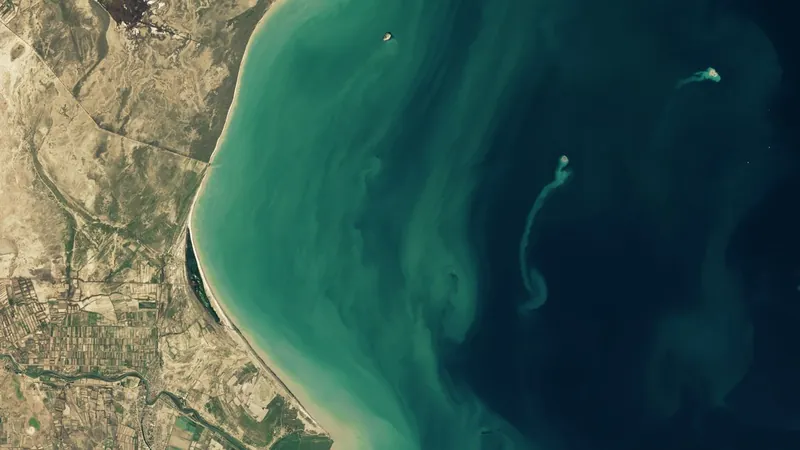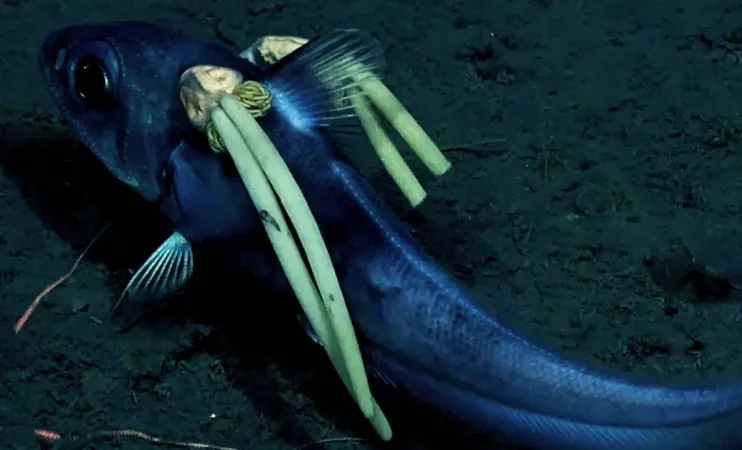
The Mysterious Life Cycle of a 'Ghost Island' in the Caspian Sea Revealed by Satellites
2025-01-18
Author: Ken Lee
Introduction
Prepare to be amazed as satellites unveil the extraordinary transformation of a ghostly island in the Caspian Sea! While we often perceive land as stable and unchanging, nature has a different story to tell, especially off the coast of Azerbaijan.
The Kumani Bank Mud Volcano
Nestled approximately 15 miles (25 km) from the mainland lies the Kumani Bank mud volcano, also known as Chigil-Deniz. This geological wonder is a prime location for dramatic shifts in the landscape. NASA's Earth Observatory has showcased stunning images captured by the Landsat 8 and 9 satellites, revealing the birth and rapid decay of an ephemeral island formed by a volcanic eruption.
The Emergence of the Island
In November 2022, the area was characterized by a calm sea, with the underwater mud volcano lurking unseen beneath the surface. However, in an explosive eruption early in 2023, a brand new island emerged, stretching an impressive 1,300 feet (400 meters) across, complete with a mesmerizing plume of sediment engulfing the surrounding waters.
The Island's Quick Demise
Remarkably, this island was short-lived; within mere months, it has been dramatically eroded by the currents, leaving behind little more than a trace by late 2024. This astonishing cycle of formation and erosion has not only captivated scientists but also highlights the delicate balance between land and sea.
Historical Context
The phenomenon of ghost islands is not new to Kumani Bank. Historical records indicate at least eight eruptions since 1861, with varying sizes and lifespans. The largest documented island appeared post-eruption in 1950, measuring an astounding 2,300 feet (700 meters) wide and towering 20 feet (6 meters) above sea level.
Scientific Insight
University of Adelaide geologist Mark Tingay describes mud volcanoes like Kumani Bank as "weird and wonderful features that remain largely understudied and little understood." These geological marvels occur in regions where high pressure forces hot fluids and gases to the Earth’s surface, often creating transient islands that defy our understanding of land formation.
Azerbaijan's Unique Geology
Interestingly, Azerbaijan hosts an unusually high number of mud volcanoes, boasting more than 300 across the eastern coast and surrounding areas. This unique geological landscape is not only a visual spectacle but also a critical area for geological research and understanding the planet's dynamic nature.
Conclusion
Stay tuned as we continue to monitor these captivating changes in the Caspian Sea, where nature proves that even the most seemingly solid ground can be an ever-changing masterpiece!




 Brasil (PT)
Brasil (PT)
 Canada (EN)
Canada (EN)
 Chile (ES)
Chile (ES)
 Česko (CS)
Česko (CS)
 대한민국 (KO)
대한민국 (KO)
 España (ES)
España (ES)
 France (FR)
France (FR)
 Hong Kong (EN)
Hong Kong (EN)
 Italia (IT)
Italia (IT)
 日本 (JA)
日本 (JA)
 Magyarország (HU)
Magyarország (HU)
 Norge (NO)
Norge (NO)
 Polska (PL)
Polska (PL)
 Schweiz (DE)
Schweiz (DE)
 Singapore (EN)
Singapore (EN)
 Sverige (SV)
Sverige (SV)
 Suomi (FI)
Suomi (FI)
 Türkiye (TR)
Türkiye (TR)
 الإمارات العربية المتحدة (AR)
الإمارات العربية المتحدة (AR)